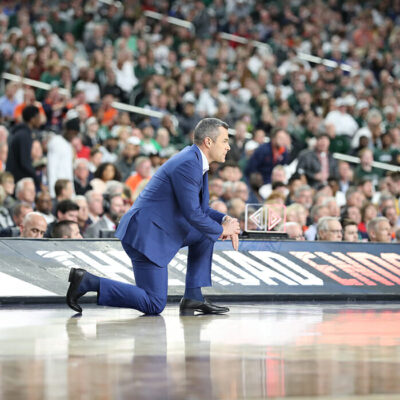After taking the helm as executive director of the Rivanna Water and Sewer Authority (RWSA) in 2004, Tom Frederick says he targeted the sewer interceptor system as the area that needed the most improvement, and the Meadow Creek Interceptor quickly became the most significant concern. But five months before the $24.5 million interceptor replacement project is slated to start, Frederick and the RWSA are facing sharp questions about both how and why it’s being done.
|
Mark Watson and his neighbors at St. Charles Court are just looking for a little respect from RWSA, which is replacing a major sewage pipeline in their backyards. |
Interceptors are the main pipelines for our waste. Built in the 1950s, the Meadow Creek Interceptor hauls between four million and five million gallons of sewage daily to the Rivanna interceptor, which feeds the Moore’s Creek Wastewater Treatment Plant. The four-mile-long Meadow Creek interceptor roughly follows Meadow Creek through the Greenbrier and Locust Grove neighborhoods.
During a community hearing on September 24, Frederick made the case for replacing the Meadow Creek interceptor to a skeptical audience of residents who would have to live with the construction. He pointed to numerous emergency repairs and showed pictures of broken manholes, cracked pipes and pipes with roots growing through them. According to RWSA staff, emergency repairs to the pipeline over the last five years have cost $600,000, a figure that doesn’t include staff time.
“I’m not proud of the pictures that we’re looking at,” said Frederick. “They’re issues from our past, and what we’re trying to do now is turn a corner and make it right for the future.” He said that with proper maintenance, the new pipeline could last 100 years.
Many city residents who live along the line aren’t happy with the idea of heavy machinery tearing up a swath of up to 40′ across in their backyards. Frederick said the project would last 15 months, though each segment would only have a few weeks of work. For 70 percent of the pipeline’s length, the new interceptor will just go where the old one went. But St. Charles Court is one of those exceptions where RWSA’s consultants, Greeley and Hanson, say that the pipe will have to change course. Part of what has left residents of that subdivision particularly disgruntled about the project is that they didn’t know about the details until a lawyer called them to buy right of way for the interceptor.
|
Tom Frederick must be a masochist considering all the heat he took last week about a new dam and a replacement sewer pipeline that RWSA is building. |
“Why weren’t we notified of this design way before now?” asks Mark Watson, a St. Charles Court resident. “We’re just looking for some respect.” He asked RWSA and its consultants to meet with the neighbors, as they have some ideas about how the project can be made more palatable to them all.
Frederick seemed amenable to that. “We haven’t built anything yet so we haven’t made any mistakes.”
But others may not be satisfied unless the project is called off altogether. Citizens questioned the role of growth in all of this, particularly Albemarle Place, a mega development that was denied the ability to hook up to the system because of capacity issues in the Meadow Creek interceptor and has since languished. The new pipeline will be between 3" and 6" bigger in diameter than the current one, and the size was calculated to reflect growth projections from the county and the city, which includes UVA as a customer.
Colette Hall, a city resident whose land won’t be affected by the pipeline, lashed out at RWSA nonetheless for the effect on her pocketbook. “I want to be sure that the people who are causing this increase in cost—that is Albemarle Place and the county—will pay for the majority of this interceptor replacement and not the citizens of Charlottesville.”
Frederick stuck to the story that the new pipeline is going in primarily because of the deterioration of the current one, rather than the need to provide for more growth. Gary Fern, executive director of the Albemarle County Service Authority, says that Albemarle Place—if developers decide to move forward—will pay the same rates that any other project its size would. Currently, about 5,600 city buildings hook into the Meadow Creek interceptor compared to about 3,300 from the county.
However, future growth has left unsettled how much each locality will pay. The city and the county service authority are still embroiled in talks to decide what percentage of the $24.5 million will be paid by the county and what by city.
“We’re trying to work through and figure that all out,” says City Manager Gary O’Connell. “It’s got to be sorted out before the project starts, so probably before the end of the year.”
C-VILLE welcomes news tips from readers. Send them to news@c-ville.com.







